trim and a/r for ht18 & ht18s
#2
According to this old page I got off some old website which got from somebody which got from some book which got from some press release somewhere:

and from the SAE paper which mentions the "impact turbo" aka the ht18s
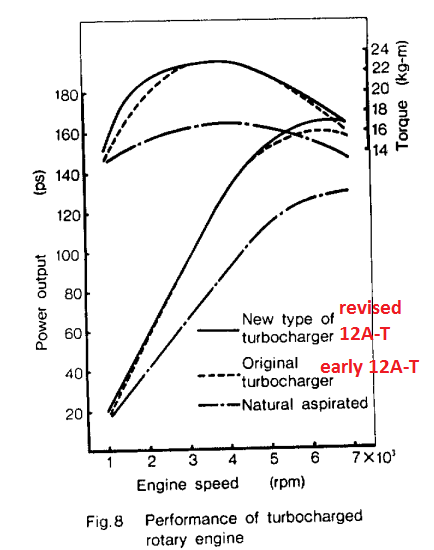
and from some old thread on here somewhere (1st gen section maybe)
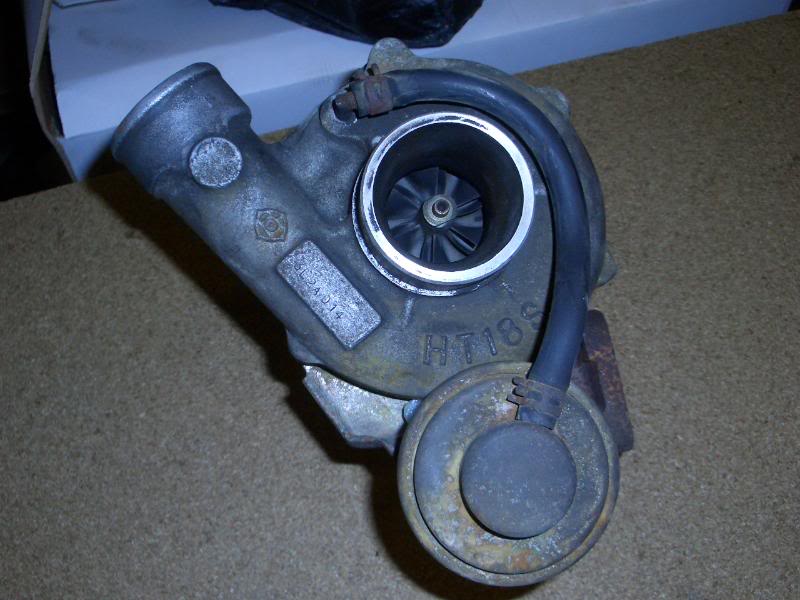
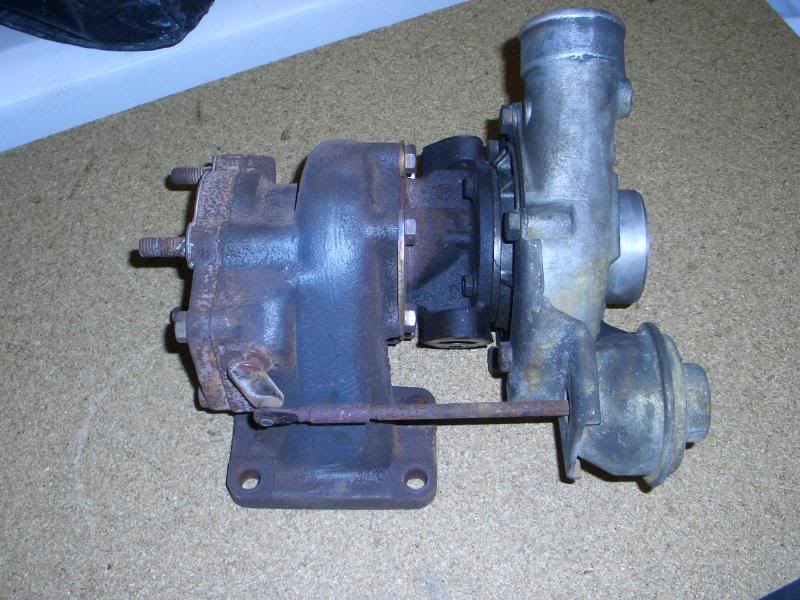
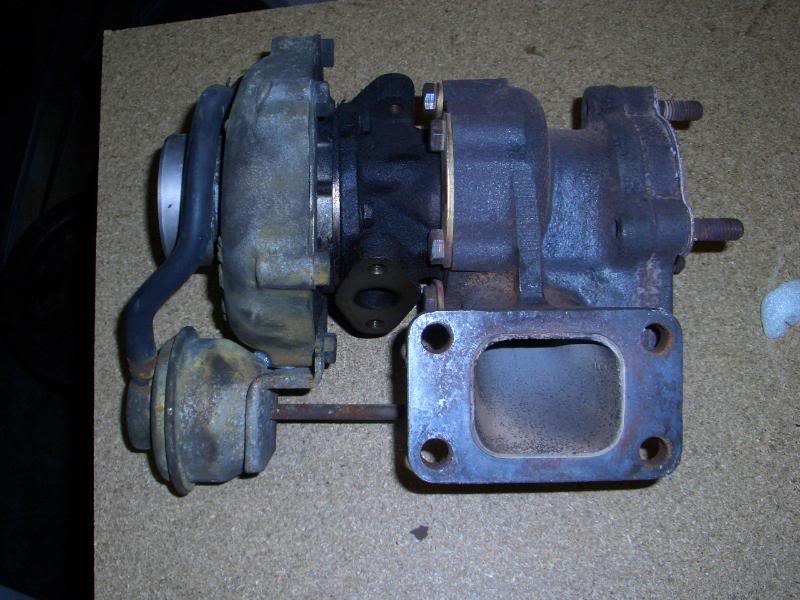
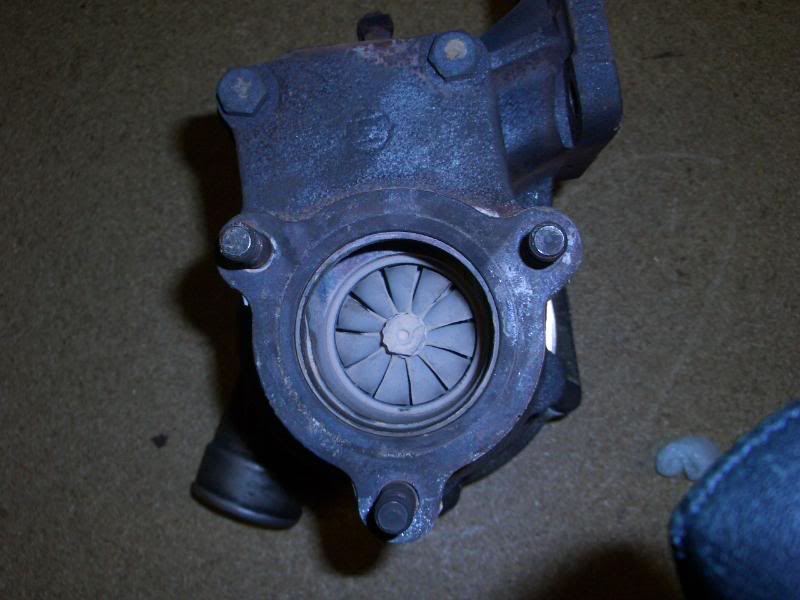
It's just an 80s basic monoscroll turbo with internal wastegate and no electronic boost control, something like you'd find on a 280ZX turbo or other early fuel injected turbo car.

and from the SAE paper which mentions the "impact turbo" aka the ht18s

and from some old thread on here somewhere (1st gen section maybe)




It's just an 80s basic monoscroll turbo with internal wastegate and no electronic boost control, something like you'd find on a 280ZX turbo or other early fuel injected turbo car.
#3
The 2nd gen also has a ht18, not sure if its the same though.
Fc3spro has measurements of the wheels:
http://fc3spro.com/TECH/TURBO/tmodels.html
Fc3spro has measurements of the wheels:
http://fc3spro.com/TECH/TURBO/tmodels.html
#4
talking head
trim is the inducer squared.. divided by the exducer squared ...x 100
( or minor squared divided by major squared ..x 100 )
the earlier 18-BM seems to be using the same compressor as found on the FC
you should be able to whip the back off your stock turbos to fill in the blanks and find your trim ratios
4 bolt rear 12a turbo = HT-18 -BM
turbine major =62 mm
turbine minor = ?
compressor minor =44mm
compressor major = 63 mm
49 trim
3 bolt rear 12a turbo = HT-18s- BM
turbine major = 57 mm
turbine minor = ?
compressor minor = ?
major =56 mm
FC turbo = HT-18s -2s
turbine major= 64 mm
Turbine minor = 54mm
=71 trim
compressor minor = 44 mm
compressor major =63 mm
=49 trim
A/R is more difficult to calculate but it is accepted the s5 HT18s-2s split pulse turbine cover is close to 1.0 A/R and the s4 open collector is a little less
A/R is the inlet area divided by the radius
( radius as determined from centre of the wheel to the centre of the circle measured for inlet area )
i would expect the 12a stuff is horrendously constrictive and looks to be an equiv to a t3 0.68 A/R
and is the root cause of a poor boost curve up top because it will be building backpressure at a rate almost 3 times that at the compressor
s5 turbine and turbine housing is nicely sized for response up to 250 rwhp before it begins to show bad manners
and matched with a ta34 turbine wheel it can flow a little more without killing the early boost
( or minor squared divided by major squared ..x 100 )
the earlier 18-BM seems to be using the same compressor as found on the FC
you should be able to whip the back off your stock turbos to fill in the blanks and find your trim ratios
4 bolt rear 12a turbo = HT-18 -BM
turbine major =62 mm
turbine minor = ?
compressor minor =44mm
compressor major = 63 mm
49 trim
3 bolt rear 12a turbo = HT-18s- BM
turbine major = 57 mm
turbine minor = ?
compressor minor = ?
major =56 mm
FC turbo = HT-18s -2s
turbine major= 64 mm
Turbine minor = 54mm
=71 trim
compressor minor = 44 mm
compressor major =63 mm
=49 trim
A/R is more difficult to calculate but it is accepted the s5 HT18s-2s split pulse turbine cover is close to 1.0 A/R and the s4 open collector is a little less
A/R is the inlet area divided by the radius
( radius as determined from centre of the wheel to the centre of the circle measured for inlet area )
i would expect the 12a stuff is horrendously constrictive and looks to be an equiv to a t3 0.68 A/R
and is the root cause of a poor boost curve up top because it will be building backpressure at a rate almost 3 times that at the compressor
s5 turbine and turbine housing is nicely sized for response up to 250 rwhp before it begins to show bad manners
and matched with a ta34 turbine wheel it can flow a little more without killing the early boost
Last edited by bumpstart; 06-06-14 at 06:40 AM.
#5
I found this in my personal archives, no idea on the source and its not written by me but I have verified some of the parts.
Originally Posted by unknownauthor
12A Turbo's came in two different specs.
One has a three stud rear housing and one a four stud rear housing. The three stud version is the smaller of the two.
The four stud version was the early type, Mazda fnding the later three stud housing featuring a different rear wheel spooled slightly quicker.
Neither featured a water cooled centre housing
Turbocharged and fuel-injected 12A (Japanese models only, produced 1983-1985)
The TURBOCHARGED and fuel-injected 12A has been confined to the Japanese market, powering the first Cosmo and Luce cars starting in late 1982 and (in it's uprated version) the P132 RX7 from September 1983 through to the end of it's model life.
The 12A Turbo was the first production turbocharged and electronically fuel injected rotary engine.
In it's turbo guise the 12A reverted to four side intake ports.
Each bank has one injector, located in the intake port near the port opening in the trochoid chamber.
Because of this location, which is a cross between manifold and direct-injection methods, Mazda engineers call the fuel injection "semi-direct injection".
The injector is actuated by electrical current and satisfactorily meets the rotary's widely varying fuel demands, from a 600-rpm idle to a full 7000-rpm operation.
Air and fuel mixing is promoted at lower speeds by an air bleed to the injector nozzle receptacle, at higher rpm by a mixing plate socket, an open-sided plastic tube with twin perforated plates. The plates splash and squeeze injected fuel, aiding mixture atomisation.
The fuel injection control unit is an analogue type made by Nippon Denso; it works in conjunction with a Mitsubishi Electric digital emission control computer.
Fuel is injected once per intake stroke, simultaneously in both chambers. As there is a 180-degree difference in the two rotors' working phases, one chamber is injected at the beginning of the intake stroke (or more precisely "travel" in the rotary), whereas the one in the other chamber receives fuel when almost two-thirds of that rotor's intake travel are covered.
As the rotary has an "internal" intake ports (each chamber takes in fuel and air on one side of the trochoid-housing and travels to the other side, where combustion occurs) chamber filling and mixture strength become uniform between the two banks, despite the staggered injection timing.
Primary intake-port timing is unchanged from the carburetted 6PI engine: opening at 58degrees ATDC and closes at 40degrees ABDC.
Opening of the secondary intake port is advanced to 32degrees ATDC; closing remains at 40 degrees ABDC.
The single peripheral exhaust port opens at 75degrees BBDC and closes at 48degrees ATDC.
Of interest in the air-only secondary intake port and manifold are dual throttle valves.
A second butterfly is located upstream in the manifold; it opens slightly later than the lower one.
The dual-valve arrangement prevents sudden air-pressure shocks and, together with the semi-direct injection system, allows a smaller plenum chamber.
The 12A Turbo was originally boosted by a Hitachi HT18-BM turbocharger with a 62mm diameter, 11-blade turbine and a 63mm 12-blade compressor supplying a relatively modest maximum boost of 320mm Hg (6.2 psi); Typical for a Japanese Turbo piston engine is about 400mm Hg (7.75 psi).
Conversely, the compression ratio does not need to be lowered as much as that of a piston engine: only to 8.5:1 from the naturally aspirated 12A's 9.4:1
The 1982 12A turbo produced 160 BHP JIS at 6000 rpm, and a maximum torque of 224 Nm (165 lb-ft) at 4000 rpm; 15-20% should be deducted to get the approximate SAE net values.
Later, the engine was given a new turbocharger, Hitachi's HT18S-BM, with a smaller 57mm turbine and a 56mm compressor, it was dubbed an "Impact Turbocharger" by Mazda engineers because it fully exploited the rotary's forceful exhaust-gas impact with it's new turbine blade shape. The new turbo added 5 more horsepower to the engine's output, as well as improving low-end torque characteristics and minimising turbo lag.
The 12A turbo also has a knock-prevention system. Mazda engineers found in developing the engine that knocking would only occur under certain operating conditions: in a 2500-3750 rpm zone when intake temperature exceeds 85 degrees celcius.
The system, comprising of ignition-pulse, intake-temperature and boost sensors, detects this knock-prone zone and feeds a signal to the emission-control and fuel-injection computers, which in turn call for ignition retard and more fuel (in the latest 13B turbo a more usual piezometric knock sensor is used).
Ignition is basically unchanged from that of the 6PI engine, which now employs semi-surface discharge sparkplugs.
As the turbo rotary's performance and consequently the thermal loads have been considerably increased (for the latter some 30%), lubrication of the trochoid sliding surface and turbocharger has become more critical.
A new trochoidal surface treatment, called MCP (micro-channel porous plating) is employed in the turbo rotary.
It is a development of the pinpoint-porous chrome plating of the normal 12A; the pinpoint holes are interconnected by miniscule channels.
Also, in contrast to the carburetted 12A's oil mixing in the carburettor for seal lubrication, the turbo rotary has separate oil injection; per chamber, one nozzle into the primary manifold and another directly into the trochoidal chamber, both fed by a metering pump.
The turbocharger is also amply lubricated, thanks to the rotary's already adequate lubricating capacity (the rotors are oil-cooled too).
The 12A turbo engine (with all manifolds, turbo, fan, alternator, power steering and air-conditioning pumps) is 786mm long, 548mm wide and 638mm tall (30.9 x 21.6 x 25.1 inches) and weighs 162 kg (356 lb)
One has a three stud rear housing and one a four stud rear housing. The three stud version is the smaller of the two.
The four stud version was the early type, Mazda fnding the later three stud housing featuring a different rear wheel spooled slightly quicker.
Neither featured a water cooled centre housing
Turbocharged and fuel-injected 12A (Japanese models only, produced 1983-1985)
The TURBOCHARGED and fuel-injected 12A has been confined to the Japanese market, powering the first Cosmo and Luce cars starting in late 1982 and (in it's uprated version) the P132 RX7 from September 1983 through to the end of it's model life.
The 12A Turbo was the first production turbocharged and electronically fuel injected rotary engine.
In it's turbo guise the 12A reverted to four side intake ports.
Each bank has one injector, located in the intake port near the port opening in the trochoid chamber.
Because of this location, which is a cross between manifold and direct-injection methods, Mazda engineers call the fuel injection "semi-direct injection".
The injector is actuated by electrical current and satisfactorily meets the rotary's widely varying fuel demands, from a 600-rpm idle to a full 7000-rpm operation.
Air and fuel mixing is promoted at lower speeds by an air bleed to the injector nozzle receptacle, at higher rpm by a mixing plate socket, an open-sided plastic tube with twin perforated plates. The plates splash and squeeze injected fuel, aiding mixture atomisation.
The fuel injection control unit is an analogue type made by Nippon Denso; it works in conjunction with a Mitsubishi Electric digital emission control computer.
Fuel is injected once per intake stroke, simultaneously in both chambers. As there is a 180-degree difference in the two rotors' working phases, one chamber is injected at the beginning of the intake stroke (or more precisely "travel" in the rotary), whereas the one in the other chamber receives fuel when almost two-thirds of that rotor's intake travel are covered.
As the rotary has an "internal" intake ports (each chamber takes in fuel and air on one side of the trochoid-housing and travels to the other side, where combustion occurs) chamber filling and mixture strength become uniform between the two banks, despite the staggered injection timing.
Primary intake-port timing is unchanged from the carburetted 6PI engine: opening at 58degrees ATDC and closes at 40degrees ABDC.
Opening of the secondary intake port is advanced to 32degrees ATDC; closing remains at 40 degrees ABDC.
The single peripheral exhaust port opens at 75degrees BBDC and closes at 48degrees ATDC.
Of interest in the air-only secondary intake port and manifold are dual throttle valves.
A second butterfly is located upstream in the manifold; it opens slightly later than the lower one.
The dual-valve arrangement prevents sudden air-pressure shocks and, together with the semi-direct injection system, allows a smaller plenum chamber.
The 12A Turbo was originally boosted by a Hitachi HT18-BM turbocharger with a 62mm diameter, 11-blade turbine and a 63mm 12-blade compressor supplying a relatively modest maximum boost of 320mm Hg (6.2 psi); Typical for a Japanese Turbo piston engine is about 400mm Hg (7.75 psi).
Conversely, the compression ratio does not need to be lowered as much as that of a piston engine: only to 8.5:1 from the naturally aspirated 12A's 9.4:1
The 1982 12A turbo produced 160 BHP JIS at 6000 rpm, and a maximum torque of 224 Nm (165 lb-ft) at 4000 rpm; 15-20% should be deducted to get the approximate SAE net values.
Later, the engine was given a new turbocharger, Hitachi's HT18S-BM, with a smaller 57mm turbine and a 56mm compressor, it was dubbed an "Impact Turbocharger" by Mazda engineers because it fully exploited the rotary's forceful exhaust-gas impact with it's new turbine blade shape. The new turbo added 5 more horsepower to the engine's output, as well as improving low-end torque characteristics and minimising turbo lag.
The 12A turbo also has a knock-prevention system. Mazda engineers found in developing the engine that knocking would only occur under certain operating conditions: in a 2500-3750 rpm zone when intake temperature exceeds 85 degrees celcius.
The system, comprising of ignition-pulse, intake-temperature and boost sensors, detects this knock-prone zone and feeds a signal to the emission-control and fuel-injection computers, which in turn call for ignition retard and more fuel (in the latest 13B turbo a more usual piezometric knock sensor is used).
Ignition is basically unchanged from that of the 6PI engine, which now employs semi-surface discharge sparkplugs.
As the turbo rotary's performance and consequently the thermal loads have been considerably increased (for the latter some 30%), lubrication of the trochoid sliding surface and turbocharger has become more critical.
A new trochoidal surface treatment, called MCP (micro-channel porous plating) is employed in the turbo rotary.
It is a development of the pinpoint-porous chrome plating of the normal 12A; the pinpoint holes are interconnected by miniscule channels.
Also, in contrast to the carburetted 12A's oil mixing in the carburettor for seal lubrication, the turbo rotary has separate oil injection; per chamber, one nozzle into the primary manifold and another directly into the trochoidal chamber, both fed by a metering pump.
The turbocharger is also amply lubricated, thanks to the rotary's already adequate lubricating capacity (the rotors are oil-cooled too).
The 12A turbo engine (with all manifolds, turbo, fan, alternator, power steering and air-conditioning pumps) is 786mm long, 548mm wide and 638mm tall (30.9 x 21.6 x 25.1 inches) and weighs 162 kg (356 lb)
#7
None I think one of these is highflowed with a FC3S compressor wheel.
I also have on record here the early 12AT turbo (non rx-7) was 0.65A/R turbine and that makes me think the late 12AT turbo (GT Limited / Turbo) was 0.57 or 0.58 I will have the specifics some where as I used to own a broken one.
I also have on record here the early 12AT turbo (non rx-7) was 0.65A/R turbine and that makes me think the late 12AT turbo (GT Limited / Turbo) was 0.57 or 0.58 I will have the specifics some where as I used to own a broken one.
Thread
Thread Starter
Forum
Replies
Last Post



